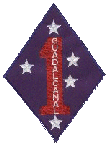Snigbert
Posts: 2956
Joined: 1/27/2002
From: Worcester, MA. USA
Status: offline

|
[B]Land based flak against large level bombers attacking at consistantly low altitudes is too ineffective. By this I dont mean that dozens of planes should go crashing down to earth when it is attempted, but rather, when attacking a strongly defended base, there should be a more tangible result of ignoring the defense than with what is usually seen. More 'hits' should result from such tactics as even a pop gun can contribute something if the bombers attack low enough, resulting in more damages, more kills but most importantly more disruption to the bombers and their resulting accuracy.[/B]
Also, radar at the base should have an effect on flak because it would allow the base to be on alert, people at their battlestations, know the direction of the attack, etc.
Right now all AAA has an effectiveness rating, however I think it should vary by altitude. A handful of ma-deuces aren't going to do much against a formation of heavy bombers at high altitude, but they'd do pretty well against a fighter at low altitude. Also, the .50 cal is going to be harder to take out than a fixed AA artillery position because it is a smaller target and one guy like Rambo can run around shooting from the hip and taking out 3 or 4 fighters by himself.
I agree, just the presence of strong flak should have an efffect on bomber accuracy whether they manage to score hits or not, because formations would intentionally avoid high flak areas if possible (at least in Europe they did).
The issue with playing around with the repair rate is the fact that supplies are generic, air support is generic, engineer are generic... Let's say you have adequate repair supplies, air crews, etc in Brisbane repair 10 B-17s a day. Nobody would argue that a large city full of competent civilian labor and all the proper ingredients would have no problem repairing 10 aircraft on a given day if they had the parts.
Then you have a base like Lunga, and you also have plenty of supplies and air crews there. But the supplies might be rations and ammunition for the marines fighting there, bombs for the planes, etc. The likelihood of having enough airplane parts to repair 10 B-17s is unlikely. But since the system is generic, you have the supplies, air crews, large enough base, and poof, you've got your repaired planes.
My question is, what do you base the repair rates on, if you mess around with them? How would you determine how many planes can be repaired on a given day?
[B] I expect Allied planes to be tougher but again even a tough plane shot full of holes is going to be unavail for some time in the future.[/B]
Japanese planes like the Betty and Nell were designed with the idea that they would have to fight in the Pacific, hence over enormous distances. This is why they were basically giant fuel cans with a propellor which, when shot, would immediately burst into flames like a Hollywood style explosion. The American heavies weren't looking at range as their primary design feature, they were looking at durability, payload, survivability and other critical characteristics. This is why you see a B-17 making it back to the base with one engine working, or with it's tail shot off.
If someone doesn't like the fact that the US built tougher heavy bombers, they can simply adjust the durability or any other of a number of characteristics with the editor. They can even add 37mm cannons to their Zeros if they care more about shooting down enemy planes than playing a historic game.
[B]Consistantly attacking at unsafe altitudes against heavy AA concentrations can and should reap a consequence from the player.[/B]
In both losses to aircraft and morale, because nobody likes being sent on suicide missions for no obvious reason.
_____________________________
"Money doesnt talk, it swears. Obscenities, who really cares?" -Bob Dylan
"Habit is the balast that chains a dog to it's vomit." -Samuel Becket
"He has weapons of mass destruction- the world's deadliest weapons- which pose a direct threat to the
|
 Printable Version
Printable Version















 New Messages
New Messages No New Messages
No New Messages Hot Topic w/ New Messages
Hot Topic w/ New Messages Hot Topic w/o New Messages
Hot Topic w/o New Messages Locked w/ New Messages
Locked w/ New Messages Locked w/o New Messages
Locked w/o New Messages Post New Thread
Post New Thread